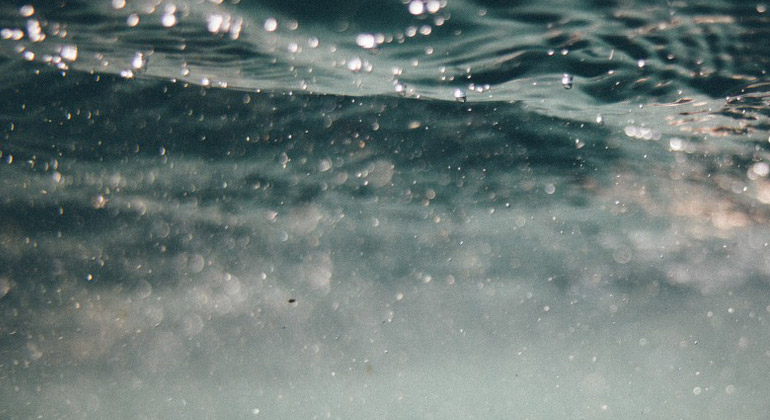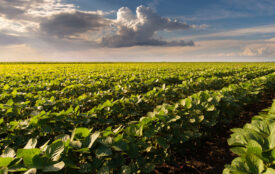Microplastics and nanoplastics in food – an emerging issue
There is global interest in the impact of plastic waste in seas and waterways on natural habitats and wildlife.
EFSA has taken a first step towards a future assessment of the potential risks to consumers from microplastics and nanoplastics in food, especially seafood.
Dr Peter Hollman was a member of the working group that helped EFSA’s Panel on Contaminants in the Food Chain (CONTAM) to draft its Statement on microplastic and nanoplastic particles in food. Dr Hollman is senior researcher at RIKILT research institute and associate professor for Nutrition and Health, both at Wageningen University in The Netherlands. His research includes work on the occurrence, analysis and toxicity of micro- and nanoplastics.
What does EFSA say in its Statement?
Peter Hollman: EFSA has comprehensively reviewed existing literature on this topic and found there are insufficient data on the occurrence, toxicity and fate – what happens after digestion – of these materials for a full risk assessment. It also revealed that nanoplastics require particular attention. So the review has allowed EFSA to take stock of scientific developments in this area, identify data and knowledge gaps and recommend future research priorities to address them.
What are micro/nanoplastics? How big are they?
EFSA defines microplastics as ranging in size from 0.1 to 5000 micrometres (µm), or 5 millimetres to give an idea. Nanoplastics measure from 0.001 to 0.1 µm (i.e. 1 to 100 nanometres).
PH: The world’s ever increasing use of plastics has created large areas of floating plastic waste in the oceans, so-called plastic soup. Areas as big as France have been observed. This floating plastic debris is gradually fragmenting into smaller particles which eventually become microplastics and even nanoplastics. There are pellets, flakes, spheroids and beads engineered to these sizes too.
Which foods contain these materials?
PH: There are no data at all on nanoplastics in food but there is some information on microplastics, particularly for the marine environment. Fish show high concentrations but since microplastics are mostly present in the stomach and intestines they are usually removed and consumers are not exposed to them. But in crustaceans and bivalve molluscs like oysters and mussels, you eat the digestive tract so there is some exposure there. They have also been reported in honey, beer and table salt.
Are they harmful to consumers?
PH: It’s too early to say but it seems unlikely, at least for microplastics. One potential concern is over high concentrations of pollutants like polychlorinated biphenyls (PCBs) and polycyclic aromatic hydrocarbons (PAHs) that can accumulate in microplastics. There might also be residues of compounds used in packaging such as bisphenol A (BPA). Some studies suggest that after consuming microplastics in food these substances may transfer into tissues. So, it is important to estimate the average intake.
We know that engineered nanoparticles (from different types of nanomaterials) can enter human cells so this may have consequences for human health. But more research and data are needed.
Did EFSA estimate the average intake?
PH: Not for nanoplastics but with the limited data available, EFSA estimated that a portion of mussels (225g) could contain 7 micrograms of microplastic. Even if this amount of material contained the highest ever measured concentrations of PCBs or BPA, for example, it would make a small contribution to overall exposure to these substances: it would increase PCB exposure by less than 0.01 per cent or BPA exposure by less than two per cent. But this is a worst case scenario.
What future scientific work is needed?
PH: The Panel’s recommendations can help the scientific community build up a clearer picture. Research should generate data on the occurrence of microplastics and especially nanoplastics in food, their fate in the gastrointestinal tract, and their toxicity. Knowledge on the toxicity of nanoplastics is particularly needed because these particles may penetrate all kinds of tissues and eventually end up in cells. The Statement also proposes standardised analytical methods to help with monitoring.
Has EFSA looked at the risks to wildlife/the environment?
PH: EFSA looked at this from the food safety perspective only. Other organisations are looking at bio-habitats and wildlife. We reviewed the key reports by the UN Joint Group of Experts on the Scientific Aspects of Marine Environmental Protection and included a new study on measures to combat marine litter, commissioned by the European Commission’s DG Environment. Those were critical sources for establishing a framework for approaching this issue from the food safety angle. The European Environment Agency took a broader view in its report on the State of Europe’s Seas. EFSA’s Statement and future work can complement those efforts.
Has your participation benefitted your own scientific work?
PH: For me, discussing these issues with experts from other scientific disciplines was rewarding. Bringing diverse expertise to the table allowed us to look at the problem from different perspectives. This gave a more balanced view of the problems, and really helped to find the right focus for the Panel’s Statement.Dr Jose Tarazona is Head of Pesticides at EFSA. An environmental toxicologist with decades of experience at national and European level assessing pesticides and other chemicals, Dr Tarazona sheds some light on his team’s initiative.








